


TO DRIVE STUDENT OUTCOMES AND EXPERIENCES





TO DRIVE STUDENT OUTCOMES AND EXPERIENCES

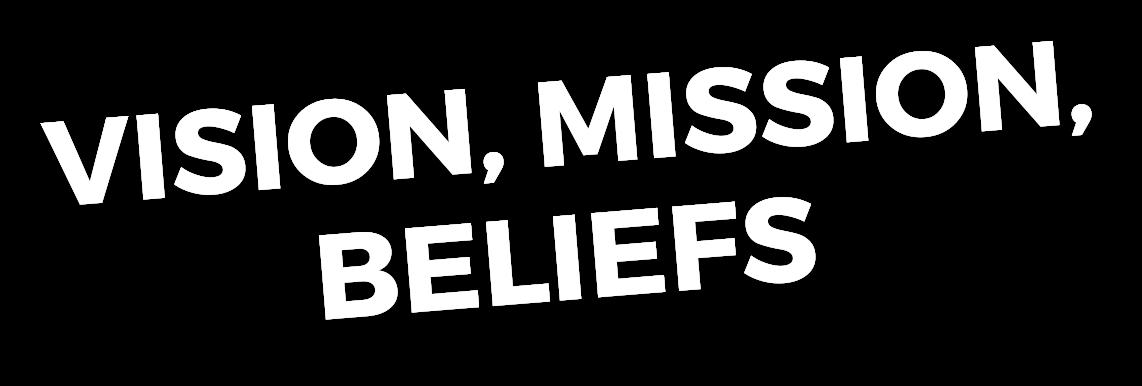
VISION
All students will graduate high school college, career, and lifeready, prepared to complete a two-or four-year college degree or workforce certification
MISSION
Pittsburgh Public Schools (PPS) will be one of America’s premier school districts, student-focused, well-managed, and innovative We will hold ourselves accountable for preparing all children to achieve academic excellence and strength of character, so that they have the opportunity to succeed in all aspects of life


All children can learn at high levels. Teachers have a profound impact on student development, and should have ample training, support and resources
Education begins with a safe and healthy learning environment
Families are an essential part of the educational process
A commitment from the entire community is necessary to build a culture that encourages student achievement.
Improvement in education is guided by consistent and effective leadership
Central office exists to serve students and schools
A Theory of Action is a connected set of propositions, a logical chain of reasoning that explains how change will lead to improved practices It “connects the dots” explaining in a commonsense way which features are expected to produce results that lead to the final desired outcome.
IF PPS’ CULTURE values clear and collaborative relationships, and SYSTEMS are in place that support system-wide improvement and effective leadership, THEN quality and equitable teaching and learning practices, utilizing culturally responsive practices and standards-based INSTRUCTION, along with a belief that all students can learn, will ensure high expectations and STUDENT ACHIEVEMENT - so that all students successfully graduate college, career and life-ready.

At Pittsburgh Public Schools, our Theory of Action is built on the premise that fostering a culture of clear and collaborative relationships is essential to our success By implementing support for system-wide improvement and effective leadership, we enable quality teaching and learning Through the application of culturally responsive practices and standards-based instruction, and with the unwavering belief that every student has the potential to learn, we establish and maintain high expectations This dedication ensures that all students achieve at their highest levels, ultimately graduating prepared for college, career, and life.

I am excited to introduce Pittsburgh Public Schools' new strategic plan, Students First Always, in All Ways: A Five-Year Strategic Plan to Drive Student Outcomes and Experiences
Over an eight-month period, students, families, teachers, staff, community members, and our Board of Directors provided invaluable input regarding their perceptions and priorities for our school district. We have carefully reviewed this information and thoroughly analyzed data on our past performance to create our Strategic Plan Our plan is designed to achieve priority

outcomes that will guide our efforts over the next five years, ensuring the best possible education and support for all our students
Our strategic plan provides a clear roadmap for our efforts, outlining specific objectives to be addressed through focused and transformative initiatives, aiming to reach measurable targets for student achievement Implementing this plan will aid us in becoming the first choice for Pittsburgh’s students and families. Success requires the active involvement of our schools, staff, families, and communities Thank you for your continued commitment to the students of Pittsburgh Public Schools

Dr. Wayne N. Walters, Superintendent


DEVON TALIAFERRO 1st Vice President District 2

SILK District 4
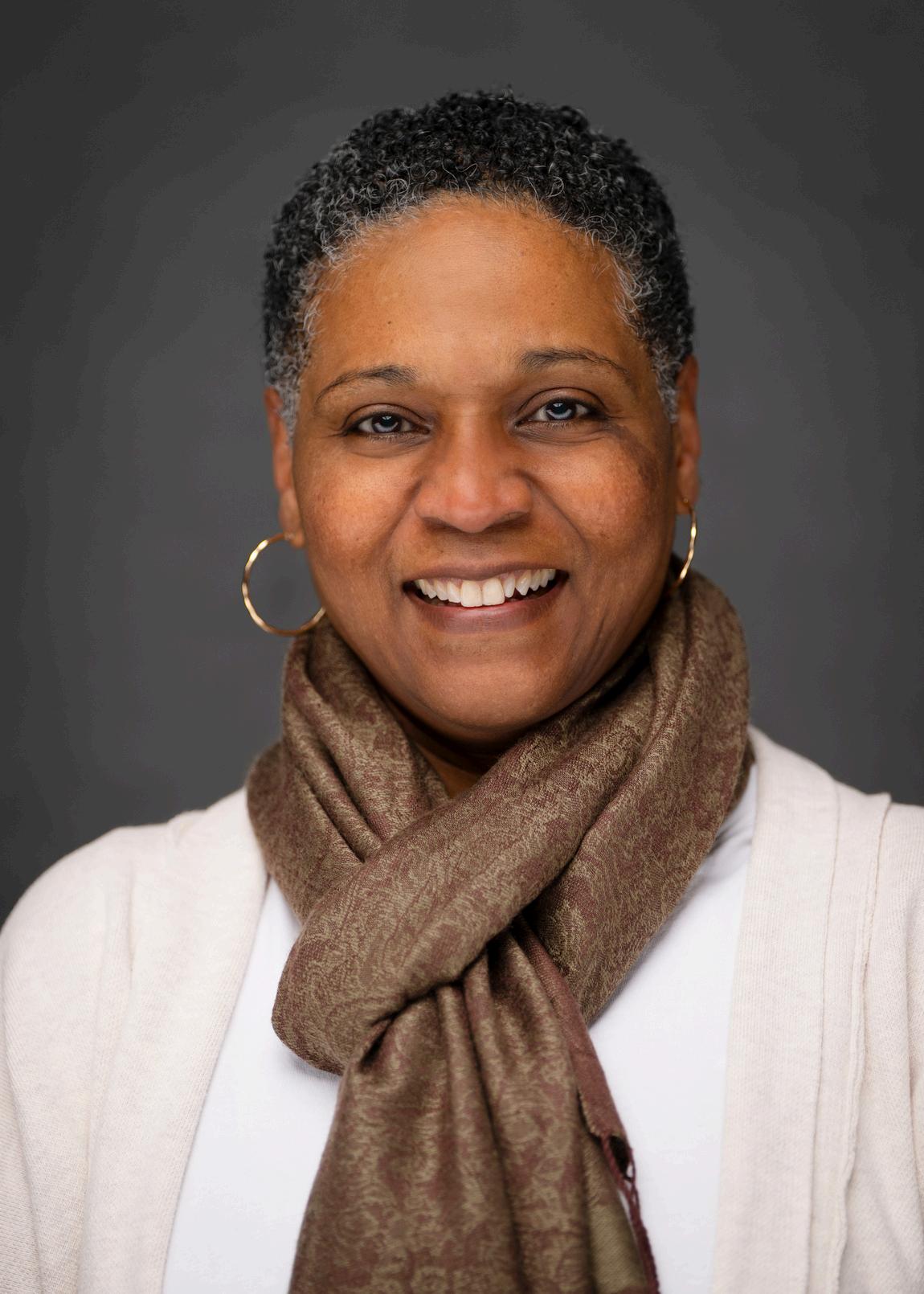
TRACEY REED 2nd Vice President District 5

YOURD District 6


WALKER President District 9

WILSON SALA UDIN District 1 District 3

PIOTROWSKI DWAYNE BARKER District 7 District 8



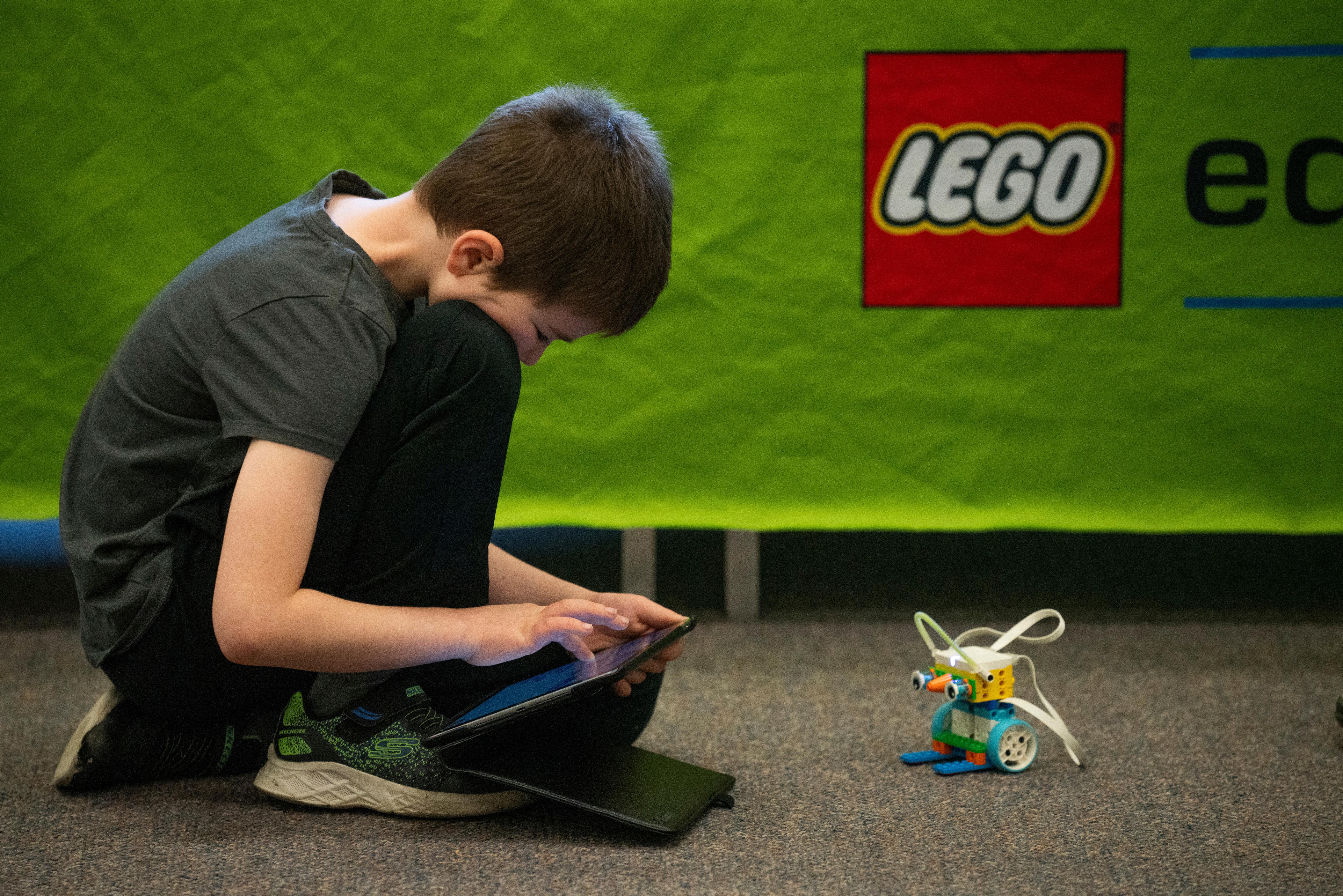

Shortly after assuming his role as the permanent Superintendent of Schools on August 1, 2022, Dr. Wayne N. Walters, in collaboration with the Board of Directors, identified five priority goals to inform the strategic planning process.
The five priority goals articulate key strategies aimed at improving Culture, Systems, and Instruction in the Pittsburgh Public Schools. Implementing these priority goals began with inquiry. The conclusions emerging from this process outlined a collaborative and strategic approach to solve our challenges with student outcomes and experiences
GOAL #2: Construct safety, health, and wellness protocols.
GOAL #4: Design effective organizational systems.



GOAL #1: Invest i culturally respon evidence-base training, tools, a instructiona practices






GOAL #3 E d







GOAL #5: Strategically allocate resources to ensure equity, excellence, and efficiency
When equity, excellence, and efficiency work in harmony, we can guarantee that every child within the Pittsburgh Public Schools' footprint receives the high-quality, comprehensive educational experience they deserve This means breaking down barriers and creating opportunities for success, regardless of race, zip code, gender (including gender identity or expression), learning disability, sexual orientation, ethnicity, or economic status By committing to these core principles, we ensure that each student has access to the resources, support, and opportunities necessary to thrive academically, socially, and emotionally in our schools.
Pittsburgh Public Schools is unwavering in its commitment to eliminating racial and disability achievement disparities To achieve this, we are dedicated to investing in research, curriculum development, assessment tools, data analysis, and accountability frameworks that are culturally responsive and student-centered These investments will ensure that every decision is made with an equity lens, focusing on access, support, and services that drive improved student learning experiences and outcomes
Central to our mission is the creation of a strong, inclusive community. We actively embrace consistent collaboration, partnerships, and relationships with key stakeholders especially those who are most marginalized to design optimal learning experiences for all students By fostering these connections, we can better understand and meet the diverse needs of our student population, ensuring that every child has the opportunity to thrive
The strategic planning process to advance our priority goal of ensuring equity, excellence, and efficiency has been comprehensive and inclusive It has involved leadership retreats, in-depth research, data analysis, meticulous planning, and the design and implementation of surveys and focus groups We have also engaged in Board committee presentations, to refine our strategies
It is important to acknowledge that the District is currently facing significant challenges, including operating with a deficit and experiencing a decline in student population. The last time the district adjusted its footprint was during the 2012-2013 school year, and given our current circumstances, a comprehensive and strategic approach is necessary It was important that this strategy be inclusive of stakeholder feedback and communication, and address the core areas of equity, excellence, and efficiency to ensure the long-term sustainability of our district
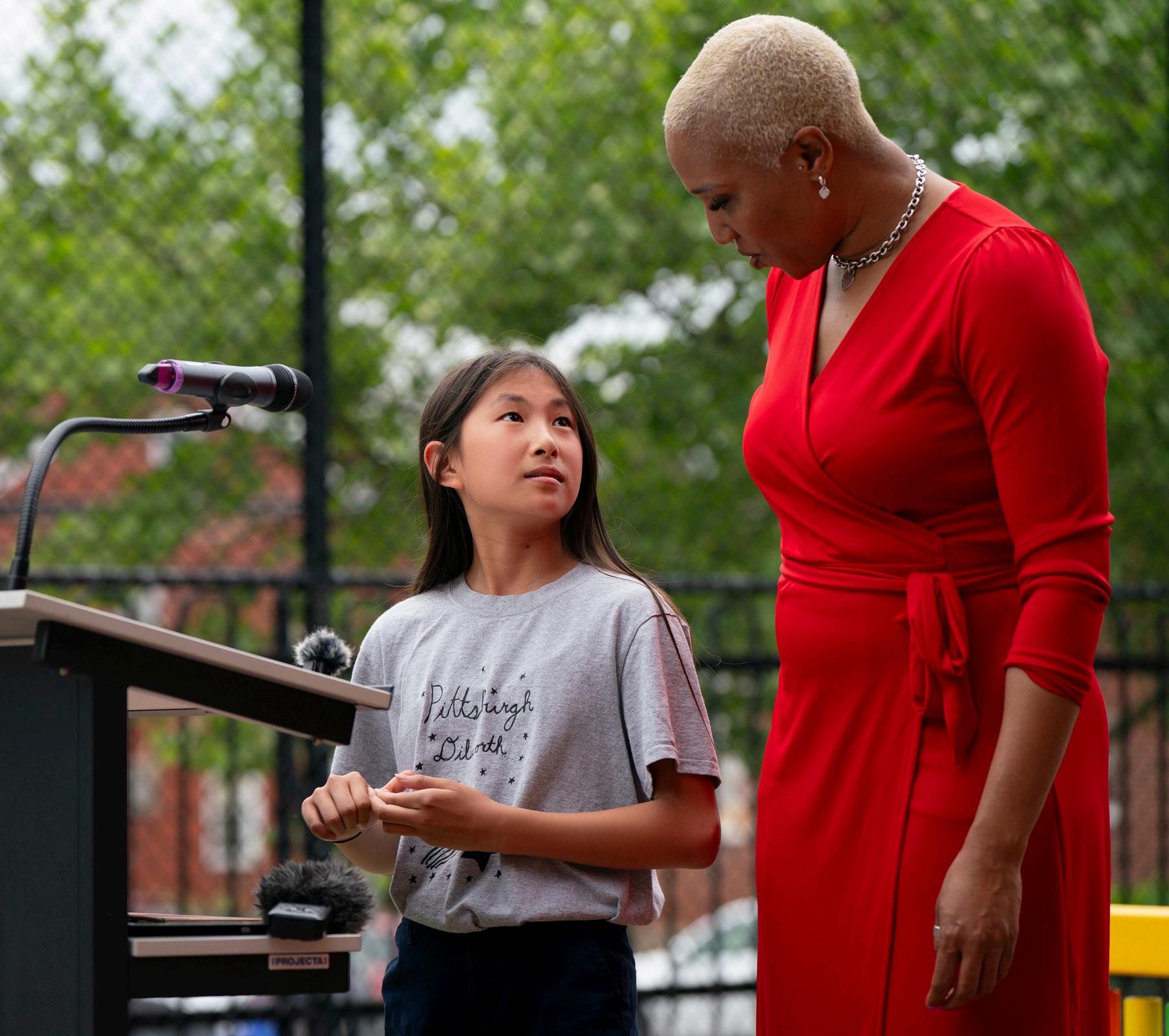
To reach an agreement on Pittsburgh Public Schools' most important goals, the Superintendent and leadership team drafted design principles to help the community frame what matters Design Principles are value statements that can help inform the tough decisions the District must make to strategically allocate its resources to ensure equity, excellence, and efficiency

Following a review of draft design principles with the Board at its March 7, 2023, Education Committee Meeting, the Superintendent conducted a community-wide design principles survey with over 1100 respondents
Percentage of surveyed participants who support this value proposition
Every child living within Pittsburgh Public Schools’ footprint is entitled to a high-quality and robust educational experience, regardless of race, zip code, gender (including gender identity or expression), learning disability, sexual orientation, ethnicity, and economic designation Therefore, our schools must be safe, effective, modern learning environments
Pittsburgh Public Schools is committed to eliminating racial achievement disparities by investing in research, curriculum, assessment, data analysis, and accountability constructs that are culturally responsive and prioritize student needs and outcomes ACADEMICS
Pittsburgh Public Schools utilizes an equity lens of access, support, and services to drive decisions that impact student learning experiences and outcomes informed by data.
Pittsburgh Public Schools is dedicated to consistent collaboration, partnerships, and relationships with key stakeholders, including the most marginalized, to create optimal student learning experiences
Pittsburgh Public Schools are vibrant community hubs that demonstrate fiscal responsibility through efficient operations while maintaining safe effective modern learning environments.
Focus groups were conducted to gather opinions and feedback from small groups of stakeholders, allowing for a more in-depth understanding of their thoughts and feelings regarding the goals and design principles A total of 10 focus groups were held with representative community members from the following groups:
Parents, Families, and Community
Teachers & School-Based Staff
High School Students Central Office Staff
Out-of-School-Time Providers
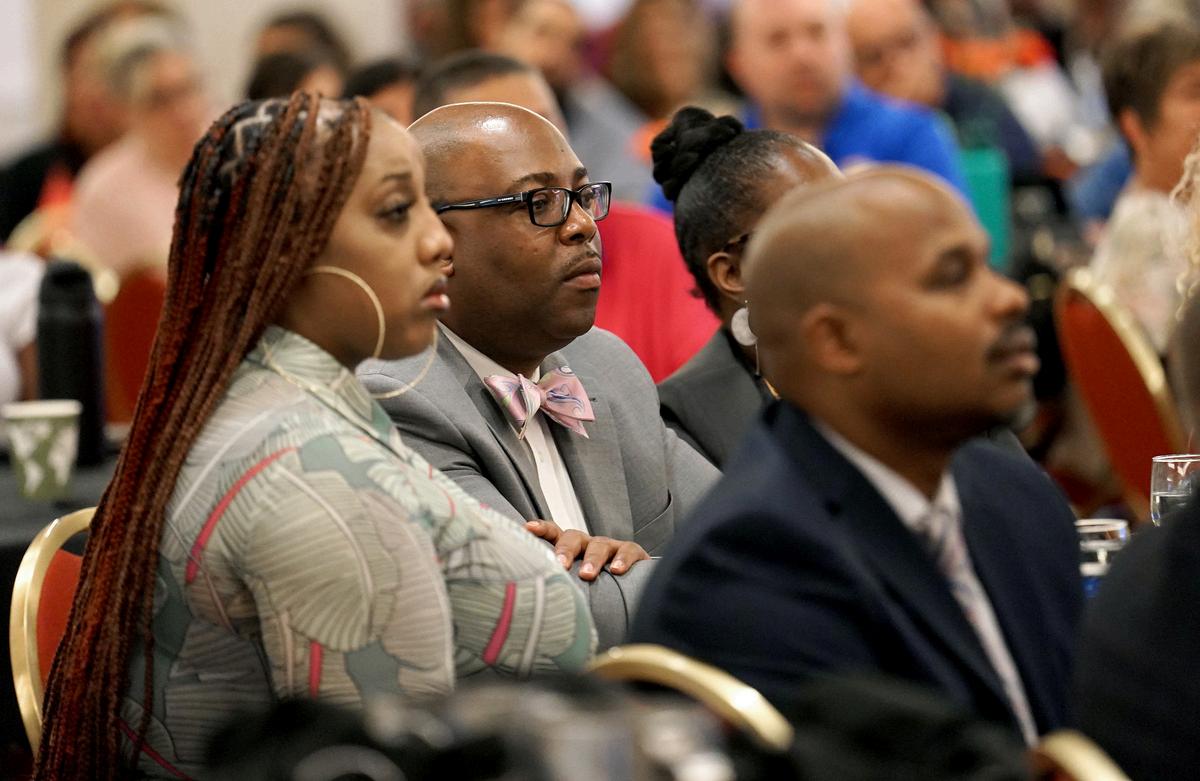
Student Envoys (Grades 3 - 8)
Principals & Assistant Principals

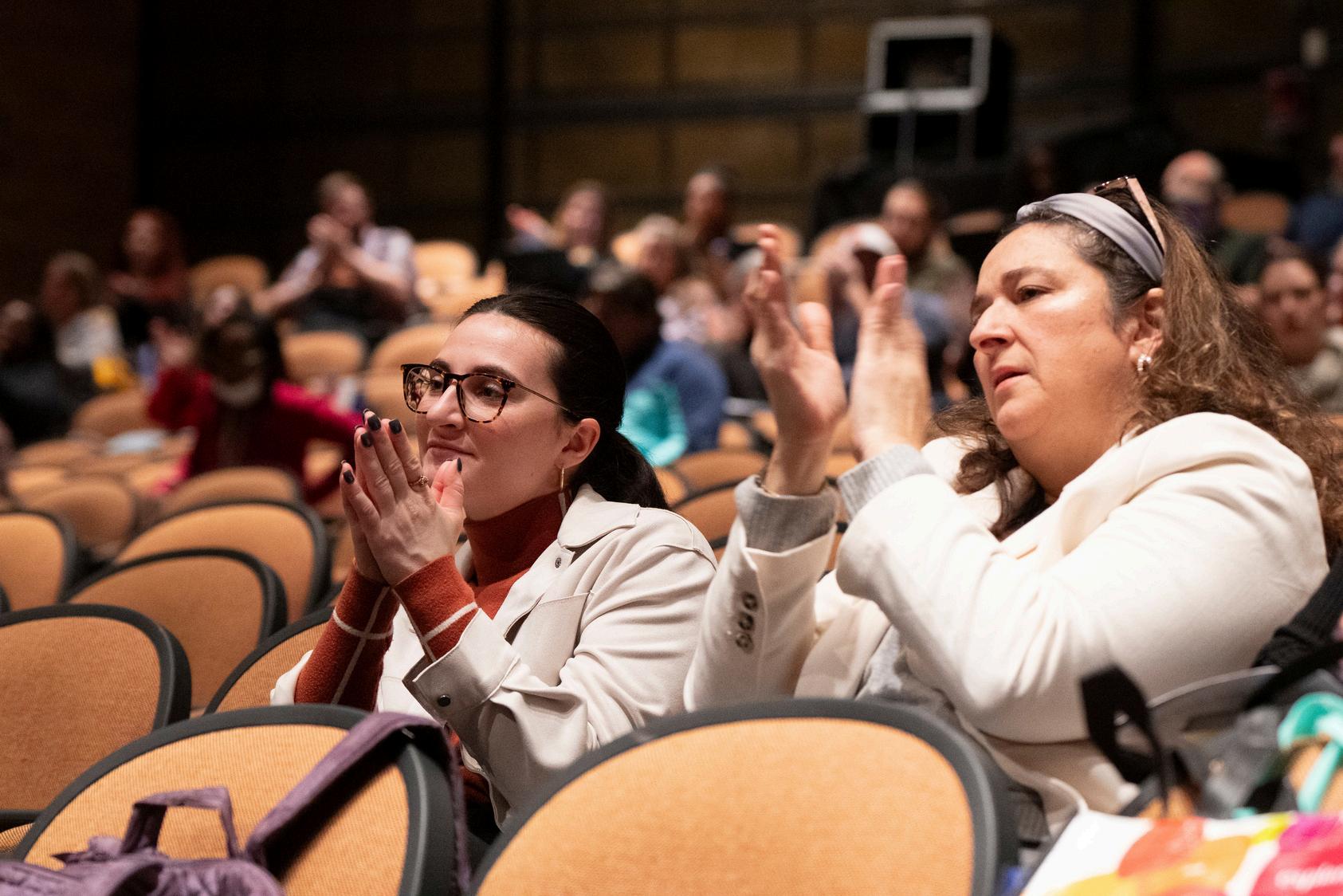
Numerous ideas, concerns, and suggestions were discussed and captured during the focus group meetings regarding the design principles These valuable insights significantly assisted the external consultant in guiding the District with shaping the strategic plan work
Incorporate diverse perspectives, culturally relevant content, and valuing student voice and identity in the classroom; while evident, they are inconsistent across the district.
Testing all students for giftedness and disabilities.
Students express concerns about security measures, such as the ease of sneaking in prohibited items and needing more security personnel.
Explore the concept of regional high schools to concentrate enrollment and address disparities in offerings across different areas.
Address the underrepresentation of certain ethnic groups among the teaching staff and ensure that hiring practices promote diversity and inclusivity.
There should be a balance between utilization and maintaining neighborhood schools.
Provide clear definitions of terms like "access," "equity," and "high-quality core academics" to ensure shared understanding and eliminate subjectivity.
Open school buildings for community activities to maximize the utilization of space and resources.
Create a map or directory of partners and resources to ensure equitable distribution and access.
There is a need for modern technology infrastructure, including reliable internet access, proper ventilation, updated equipment, and adequate power outlets in classrooms.

The strategic plan was developed in three phases: Analysis, Strategy Development, and Action Planning Following an environmental scan of district data and a review of input gathered through the Design Principles surveys and other stakeholder feedback, the final strategic plan was crafted with comprehensive input and further review from the Pittsburgh community

Our strategic plan was crafted with comprehensive input and review from the Pittsburgh community:
Career Education Partners
Pittsburgh Local Task Force
Parent Advisory Council (and Friends)
Pittsburgh City Council
Pittsburgh Cultural Collaborative
Pittsburgh Learning Collaborative
Youth Justice Organizations
Designing
STUDENTS AT EACH SCHOOL
Allderdice Brashear CAPA Carrick Milliones Obama Perry Sci-Tech Student Achievement Center Westinghouse FOCUS GROUPS
INPUT SESSIONS DISTRICT LEADERS Executive
Pittsburgh
Association Leaders Principals
Assistant
Union Leaders-Teachers


Pittsburgh Public Schools has numerous achievements of which to be proud. Recognizing and understanding these points of pride is key to building a solid foundation for our future efforts, which aim to influence student outcomes and enhance educational experiences positively.
72% of parent responde survey would recommen school
54% of parent responde that the quality of the tea their child’s school is imp

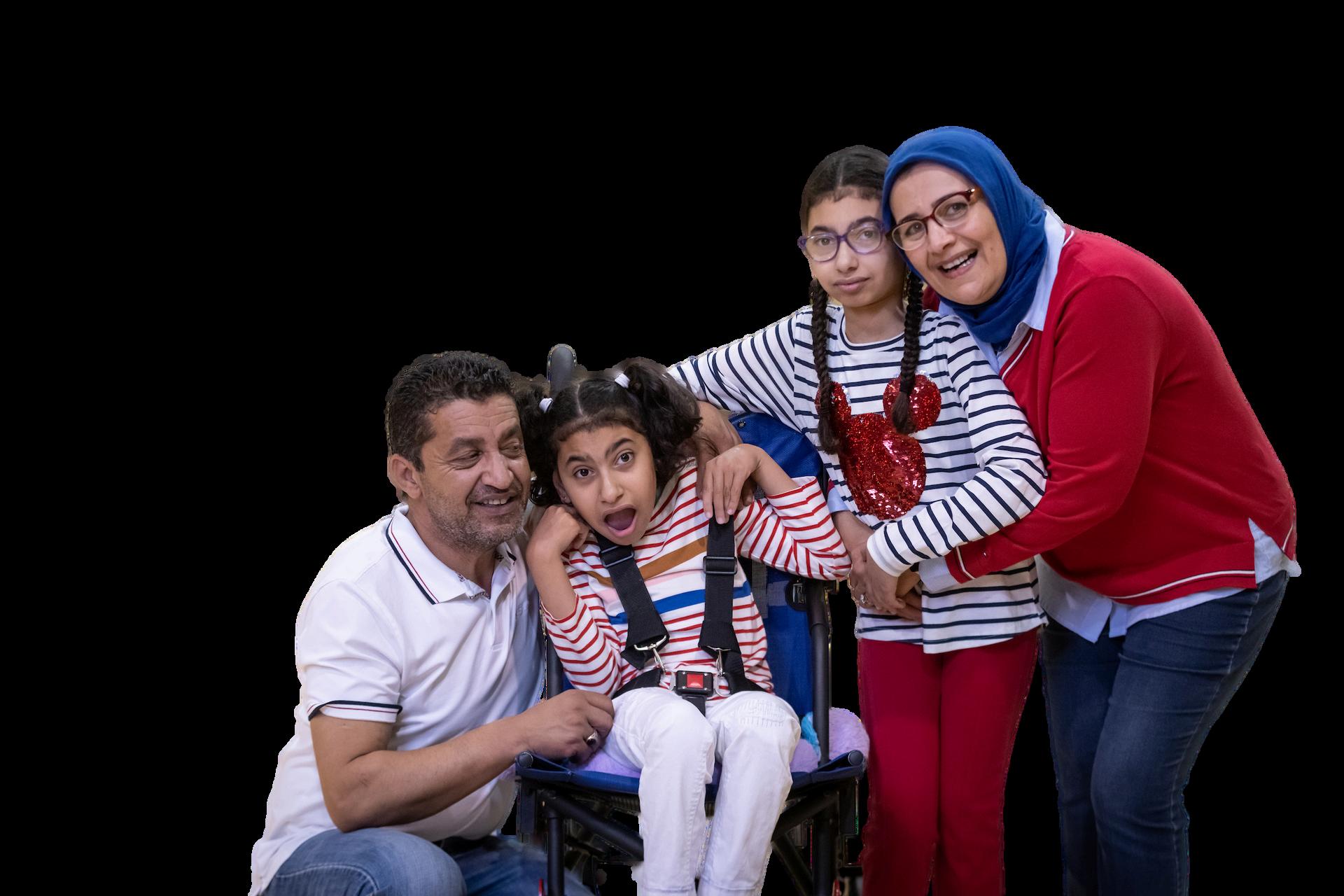

85% of employee respondents were “ very proud” of the work they do.
71% of employee respondents said they were “ very committed to Pittsburgh Public Schools.”

79% of student respondents agree there is an adult at their school who tells them when they do a good job
72% of student respondents agreed there is an adult at their school who really cares about them


At Pittsburgh Public Schools (PPS), we believe in the promise of tomorrow. Our commitment to early childhood education ensures that small accomplishments today lead to significant successes in the future. We provide child-centered, developmentally appropriate environments in 85 classrooms across the District, where over 1,300 children aged three to five thrive.
Our PA-certified Early Childhood Education teachers are dedicated to identifying the unique strengths and needs of each child and family, equipping them with the tools necessary for active engagement in learning Investing in high-quality Pre-Kindergarten (PreK) remains a priority at PPS, as strong evidence shows that students transitioning from our PreK programs are better prepared for Kindergarten and beyond

Pre-emergent(BelowBasic)
Pre-emergent(BelowBasic)
The SECI model (Socialization, Externalization, Combination, and Internalization) enhances early childhood education by promoting active, collaborative, and holistic learning Through interactive activities like group play, art projects, and hands-on experiments, children develop social, cognitive, and problem-solving skills This approach ensures continuous knowledge sharing and a comprehensive educational experience for young learners
The District’s 4-year cohort graduation rate has been steadily increasing since the 2018-2019 school year, rising to 85 5% in 2021-22 This upward trend is observed across all student groups, with the most significant gains among students with an Individualized Education Plan (IEP).
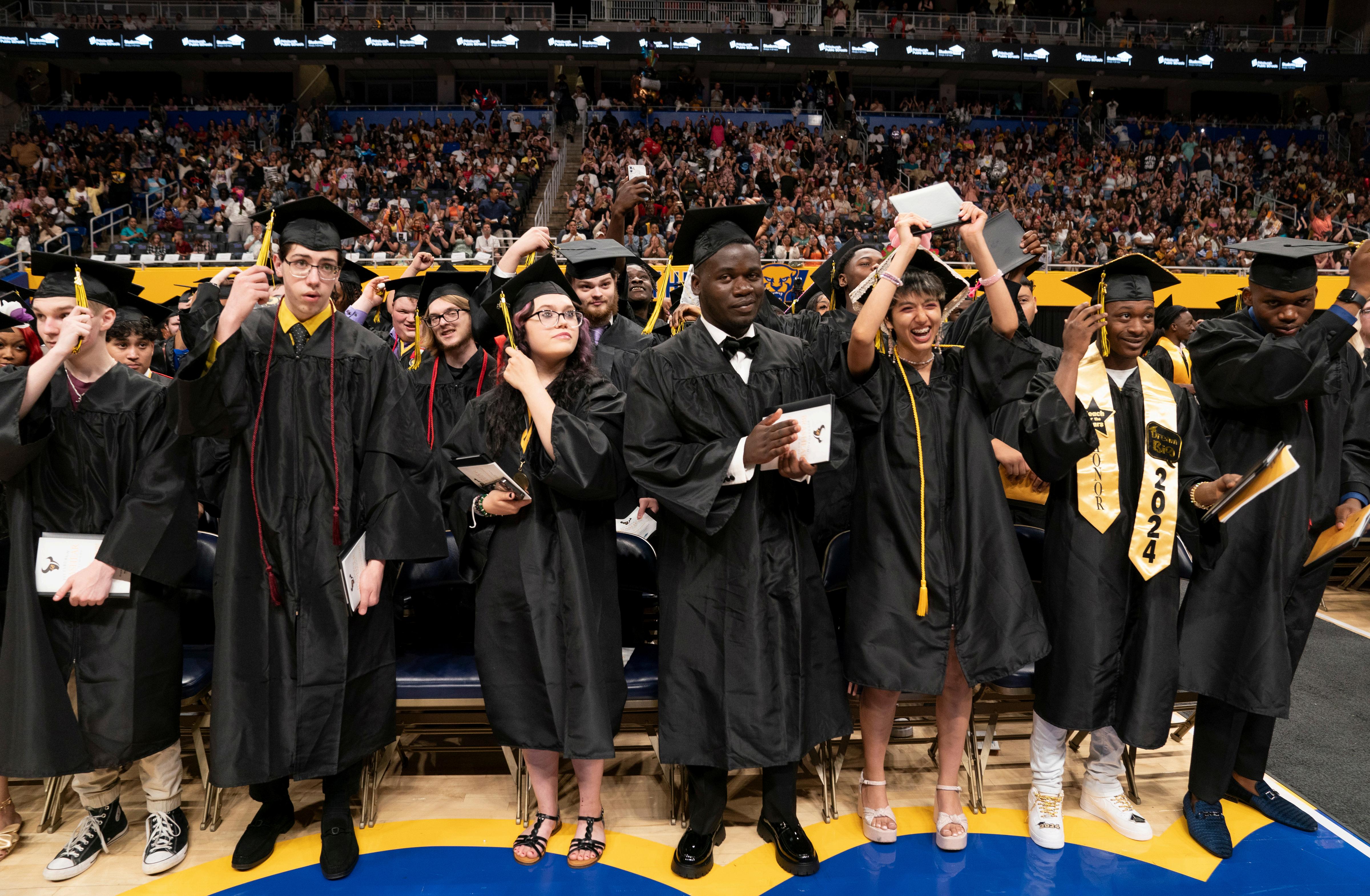
The Cohort Graduation Rates are a calculation of the percentage of students who have graduated with a regular high school diploma within a designated number of years since the student first entered high school The rate is determined for a cohort of students who have all entered high school for the first time during the same school year (PA Department of Education)
"Chronically absent" refers to students who are on track to miss at least 10% of the school year, or 18 days annually For students to benefit from the new curriculum and opportunities at PPS, the District must ensure they are consistently in the classroom and ready for instruction Missing just 1-2 days per month can result in losing over a full year of education throughout a K-12 career. Traditionally, addressing attendance has focused on truancy, which counts only unexcused absences, emphasizes compliance, and relies on legal and administrative solutions.
It is crucial to recognize that all absences matter excused, unexcused, and suspensions. Through Everyday Labs, funded by our partner A+ Schools, PPS is educating families about the impact of chronic absenteeism and the significance of all absences on student learning. In its first school year (2022-2023), Everyday Labs sent over 172,000 communications to families via mail nudges, text nudges, and general support texts
Overall, 1,778 students improved enough to no longer be considered chronically absent This equates to 17% of students improving from chronically absent to non-chronically absent There were also 5,962 students served by the Everyday Labs Family Support call in team, meaning that they chose to engage in these conversations and were interested in receiving support through this resource.

of students improved their attendance rate after receiving intervention of students improved their attendance tiers after receiving intervention of students improved to not chronically absent after receiving intervention
Everyday Labs is one of our newest initiatives and builds upon other strategies in place such as:
School-based attendance incentives, Daily robo calls, Central Office-based attendance assistants, We’re Here Summer Listening Tour, and Partnerships with multiple external providers to administer small group and individual therapy to widen support to students exhibiting school avoidance
Pittsburgh Public Schools is repeatedly praised for the dedicated and passionate staff that serve our students daily. This dedication is reflected in favorable retention rates for school-based paraprofessionals and certified professionals, which do not reflect significant racial differences. PPS teacher vacancies are well below the national job vacancy rate (5 6%) and have yet to show the recent decline experienced by other public school districts. The vacancy rate for paraprofessionals is above the national rate and has increased consistently over the past five years
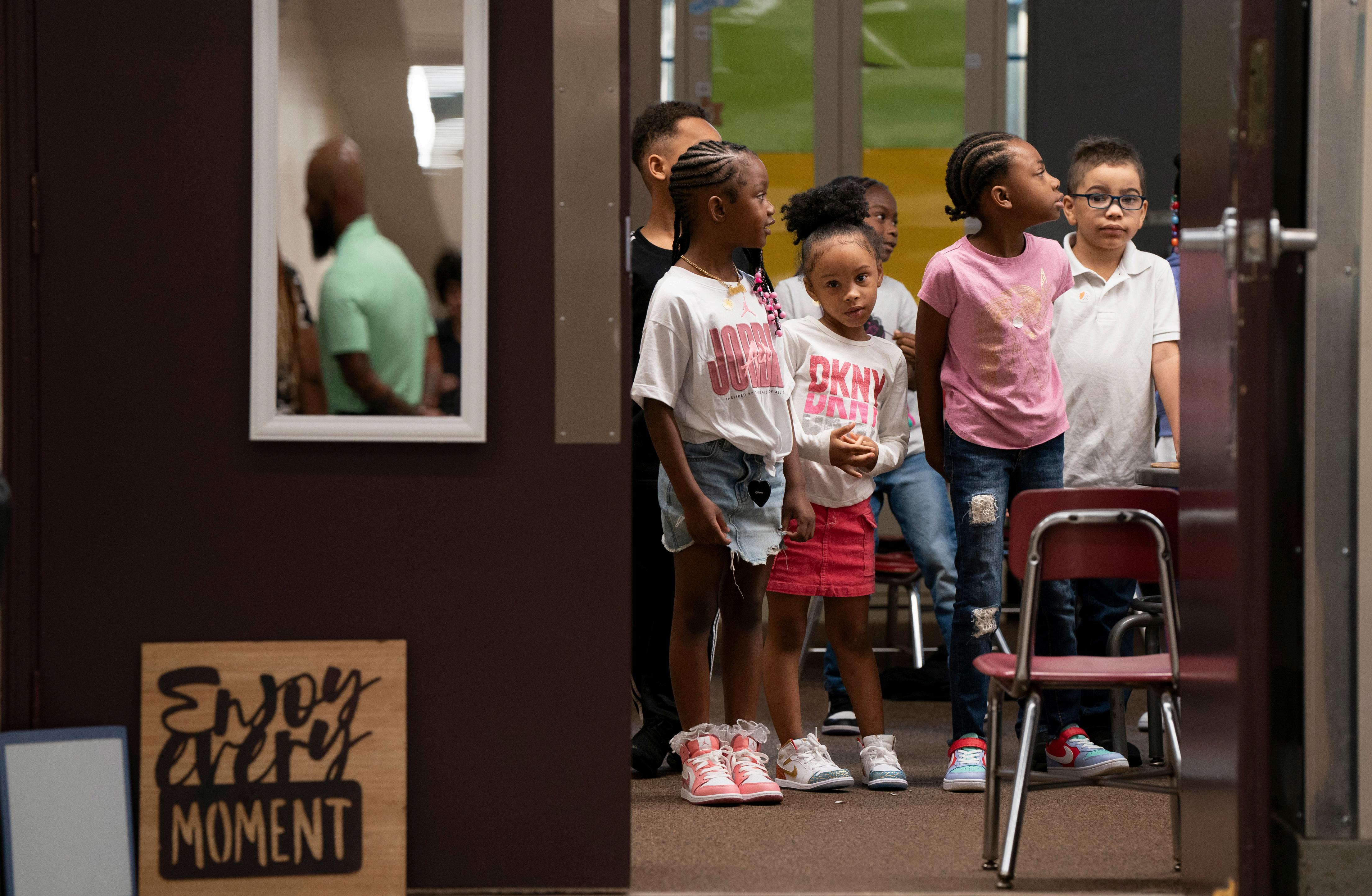
State assessment results have shown an increase across most grades since the pandemic-related decline, except for a drop in 11th grade. Math scores remain consistently lower than English scores. 8th



Over the next five years, we will focus on four Strategic Themes designed to enhance student outcomes and experiences. Each theme includes specific objectives and initiatives. These initiatives will be phased over three years to ensure sufficient staff capacity, thorough implementation planning, and ongoing monitoring Year 1 initiatives will begin in the 2024-2025 school year.

The voices and input of our students, staff, families, and community articulated the need to address specific areas of student success that they see as priorities By focusing on these priority student outcomes, our strategic plan will keep students at the center.
Students are prepared for success in life.
Students experience equitable, high-quality learning environments.
Students benefit from community resources.
Disparities in African American student outcomes are eliminated.
Students are safe and socially, emotionally, and physically healthy.
Lorem ipsum dolor sit amet, consectetur adipiscing elit. In pretium massa varius massa vestibulum sodales Integer pellen tesque et leo tempor porta Lorem ipsum dolor sit amet, consectetur adipiscing elit Aliquam idmiin augue laoreet.
Students are engaged in their learning and school community.
Based on our data and stakeholder input, we have pinpointed four strategic themes that represent the most impactful areas of district practice to enhance in order to achieve our priority outcomes Each theme is accompanied by a set of specific objectives outlined on the following pages. Our strategic themes recognize that student success extends beyond academic achievement, encompassing emotional, behavioral, mental, and physical health. It is our responsibility to acknowledge and support all these aspects of our students' well-being
Improve quality and relevance of academic experiences THEME A
THEME B
Create safe, engaging and inclusive school environments
wwwreallygreatsitecom
Optimize resources for equitable student experiences THEME C
Prioritize community outreach and access THEME D




Over the next five years, PPS will improve the quality and relevance of academic experiences through four objectives and initiatives
1. Expand relatable and culturally relevant instruction and curriculum
1a. Develop curricula for all disciplines, incorporating instructional frameworks, assessments, and unit maps aligned with culturally relevant best practices. (YEAR 1)
2. Elevate student-centered options and opportunities
2a. Create a system to elevate student voice and student-centered pathways (YEAR 2)
3. Enhance and integrate preparation for future pathways
3a. Strengthen and expand college and career pathway opportunities through expanded partnerships with local businesses, colleges and universities, and community (YEAR 1)
4. Deepen staff capacity to support successful learning experiences for all students
4a. Design diverse, dynamic, high-quality learning opportunities aligned with adult learning principles. (YEAR 1)
Aswe strive to significantly improve student outcomes and eliminate racial and disability disparities, as evidenced by the Pennsylvania System of School Assessment (PSSA), Pennsylvania Alternate System of Assessment (PASA), and Keystone Exams, we must invest in inclusive pedagogy that connects students' lived experiences with academic concepts
When District data is disaggregated for student groups by both race and economic disadvantage, we see that economic disadvantage is a greater differentiator for Asian, White, and Multi-racial students African American and Hispanic students who are not economically disadvantaged, still score at dramatically lower rates than all White, Asian, and Multi-racial student groups in both categories


If learning is the ultimate goal of teaching, and culture is central to learning, then culturally responsive education presents an opportunity to ensure every child regardless of their background has equitable access to the same learning outcomes

When asked what they would change for future students, 37% of students mentioned instructional and curriculum changes, including more relevant content, engaging learning methods, and addressing diverse student needs Additionally, 17% of student comments highlighted the need to support mental health and well-being
Students must have the opportunity to engage in and choose courses, pathways, and options that prepare them for life by addressing the needs and concerns of both their immediate and global communities. This approach should empower them to use knowledge, skills, intellect, and critical thinking to explore beauty, truth, and joy in everyday learning
In order to achieve this, PPS must provide a diverse curriculum that includes traditional academic subjects, as well as courses in the arts, humanities, and social sciences Students should be encouraged to take ownership of their learning journey by selecting subjects that resonate with their interests and career aspirations Moreover, students should have access to experiential learning opportunities, such as internships, community service, study abroad programs, and collaborative projects. These experiences allow students to apply theoretical knowledge in real-world settings, fostering a deeper understanding of complex issues and enhancing their problem-solving abilities Additionally, it is essential to cultivate an inclusive learning environment that recognizes and values diverse perspectives.
When we listen to our students' voices, we also hear that they desire access to curriculum and supports that prepare them for adult life They also want to engage in curricular opportunities, inside and outside of the classroom, that are relevant to their current environments, future interests, and navigation of adulthood. PPS is fortunate to have educators and community partners ready to support this work
FinancialLiteracy
LifeSkillsforAdulthood
AcademicMastery&Success
Employment&Professionalism
InterpersonalCommunication&SocialIntelli…
Wellness
When asked, “What do you need to know and be able to do after you graduate?” 51% of student responses reflect the need for skills to navigate adult life, such as life skills, financial literacy, and general health and wellness. More than 40% of the responses reflect skills that support professional and academic success. Approximately 40% of responses reflect professional and academic success


1a. Develop curricula for all disciplines, incorporating instructional frameworks, assessments, and unit maps aligned with culturally relevant best practices. At the end of completion of strategic initiative 1a, the following outcomes will be achieved:
Curricula will be developed across all disciplines, incorporating culturally relevant and research-based best practices
The instructional framework will support teachers in designing lessons that honor students' cultural identities, foster understanding of other cultures, and equip students with knowledge and skills to engage with local and global issues
3a. Strengthen and expand college and career pathway opportunities through expanded partnerships with local businesses, colleges and universities, and community. Once strategic initiative 3a is successfully implemented the following outcomes will be achieved:
Clearly defined K-12 pathways for students and families.
Strong partnerships with post-secondary, industry, and business partners to support career exploration and development.
Implementation of career plan pathways - K-5 Educate, 6-8 Expose, 9-12 Empower
4a. Design diverse, dynamic, high-quality learning opportunities aligned with adult learning principles.
At the completion of strategic initiative 4a, the following outcomes will be achieved:
A District Theory of Change using Standards for Professional Learning
A staff feedback system that utilizes district evaluation data to identify staff professional learning needs.
Implementation Learning Plan for each department.
Training syllabus that includes professional learning resources and development options for all school and central office-based staff.

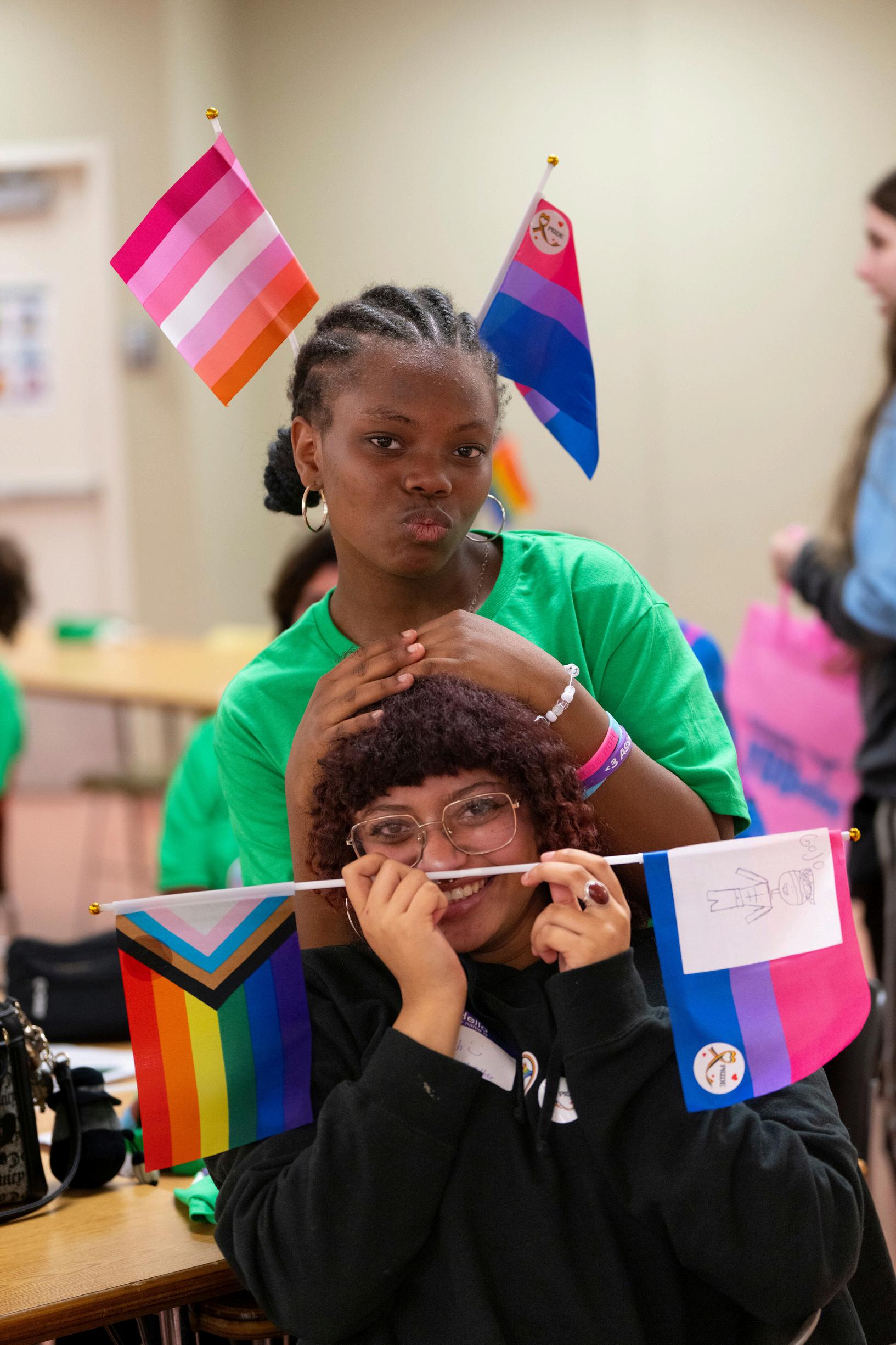


PS will create safe, engaging and inclusive school rough four objectives and five initiatives.
Create safe, engaging and inclusive school environments
1. Cultivate school cultures of hope, well-being and belonging
1a. Implement research-based school and classroom practices that create positive, student-centered cultures where thinking is valued, visible, and promoted (YEAR 1)
2. Expand programs that promote students’ interests and self-expression
2a. Develop diverse course offerings, learning opportunities, and extracurricular activities that align student interests and promote self-expression. YEAR 2)
3. Advance inclusionary practices that prioritize students who have been historically marginalized including African Americans, students with disabilities, and English Language Learners
3a. Strengthen educators’ capacity to cultivate inclusive learning environments focused on cultural competencies, disability awareness, and English Language Learner support (YEAR 2)
4. Deepen staff capacity to support successful learning experiences for all students
4a. Expand resources to increase the use of MTSS-Behavior strategies to foster proactive, empathetic learning environments (YEAR 1)
4b. Expand both internal and external safety protocols to ensure safety for students and staff (YEAR 1)
suggests that school culture is most effectively influenced when students and teachers are immersed in contextualized experiences that emphasize joy, identity, skills, intellect, and critical thinking (Blankstein & Noguera, 2015; Hammond, 2015; Howard, 2010; Muhammad, 2020; Muhammad, 2023). For instance, schools could implement project-based learning that allows students to explore subjects relevant to their cultural backgrounds, fostering a deeper connection to the material Additionally, arts and music programs that celebrate diverse cultural expressions can help students develop a strong sense of identity and pride.
Input from Pittsburgh Public Schools stakeholders highlights a strong desire for schools to engage students and staff in experiences that not only celebrate students but also focus on intrinsic motivations. For example, incorporating student-led initiatives, like peer mentoring programs or student councils, can empower students to take ownership of their learning and school environment. Training staff to create communities of belonging is also crucial, as it equips them to recognize and nurture each student's unique strengths and contributions
According to a recent survey, only 42% of students in grades 6-12 feel safe Safety and discipline are frequently cited as obstacles by students in focus groups, with 12% mentioning that these issues hinder their success Additionally, 12% of student focus group responses highlight the need to address safety and discipline when asked about changes they would make for future students
42% of parent focus group responses mention academic programming and scheduling as an important interest and opportunity, including a variety of content areas, and experiential and physical activities (top mention)
Through instructional support, educators will enhance their knowledge and practice in effectively leveraging the lived experiences of students and staff For example, teachers might incorporate culturally responsive teaching methods that draw on students' backgrounds to make lessons more relevant and engaging This approach will also help teachers assess how to best cultivate student interests and self-expression both in and out of the classroom, perhaps through personalized learning plans or opportunities for students to showcase their work to the community.
Ultimately, our goal is to create safe school environments that promote positive behaviors, enhance student engagement, and reduce violent incidents and suspensions Initiatives such as restorative justice programs, mindfulness practices, and social-emotional learning curricula can significantly improve the overall school experience for students, staff, and families We believe these efforts will lead to more vibrant, inclusive, and supportive school communities where every student can thrive.
In November 2023, nearly 300 students in grades 3-12 were sworn in as peer mediators, marking a significant move toward positive conflict resolution in schools. These students completed training in conflict resolution and mediation skills to help their peers resolve minor conflicts

ProThe Student Envoy Project empow students as active partners in enha academic performance and school Trained Student Envoys lead cultur among their peers throughout the




1a. Implement research-based school and classroom practices that create positive, student-centered cultures where thinking is valued, visible, and promoted
Once strategic initiative 1a is successfully implemented, the following outcomes will be achieved:
Districtwide plan that embeds practices and principles where thinking is valued and visible
Consistent opportunities for students, staff, and families to engage in experiences designed to center joy, identity, skills, intellect, and criticality
4a Expand resources to increase the use of MTSS-Behavior strategies to foster proactive, empathetic learning environments
At the completion of strategic initiative 4a, the following outcomes will be achieved:
Dedicated resources for the development of Tier 2 and Tier 3 systems within the MTSS-Behavior framework to provide more intensive behavioral support to students within their school during the school day
More partnerships with mental health providers and continued coaching for Tier 2/3 teams
4b. Expand both internal and external safety protocols to ensure safety for students and staff.
After the successful execution of strategic initiative 4b, the following outcomes will be achieved:
Decrease in violent incidents and out-of-school suspension days, along with an increase in student engagement, positive behaviors, and attendance.
More positive experiences within our schools for students, staff, and families, as measured by increased student enrollment, employee retention/attendance, and overall perceptions of the District.
Establishment of student-centered safety spaces, including school safety clubs, workshops, and community resources.




Over the next five years, PPS will optimize resources for equitable student experiences through three objectives and seven initiatives
Optimize resources for equitable student experiences
1. Redesign schools to ensure access to quality curricular and extracurricular experiences
1a. Transition to a structure of foundational PreK-5 schools, developmentally responsive 6-8 middle schools, and 9-12 high schools. (YEAR 2)
1b. Implement district-wide grade level requirements for minimum program offerings, including extra-curricular opportunities across all schools (YEAR 1)
2. Consolidate schools to maximize resources
2a. Analyze existing specialized programming and magnets to establish a way to provide equitable offerings district-wide when consolidating schools. (YEAR 1)
2b. Assess district-wide facility and program costs, establishing financial protocols for consolidation recommendations that support academic excellence and financial sustainability (YEAR 3)
2c. Develop standardized, student-centered metrics and a rubric to evaluate the building portfolio, identifying schools for continued use or closure during district consolidation (YEAR 3)
3. Improve building conditions, infrastructure, and learning spaces
3a. Define Educational Specifications for the physical needs of the District’s educational program including learning spaces, specialized staff, support spaces and support features for buildings
(YEAR 2)
3b. Create a sustainable, adaptable multi-year Facilities Master Plan addressing building usage, priority improvements, goals, and projected enrollments, supported by the District’s Capital Plan.
(YEAR 2)
TheDistrict continues to face yearly decreases in enrollment, coupled with population shifts, which significantly challenge our ability to provide equitable, excellent, and efficient educational opportunities The number of school-aged children in the PPS attendance zone has steadily declined, and charter school enrollment has increased Since 1987, enrollment in PPS has declined by over 20,000 students In October of 2022, 62.8% of Pittsburgh resident school enrollees attended a PPS school, a decline from 68% in the Fall of October of 2017
This decline has exacerbated financial challenges and disparities, impacting our capacity to offer equitable opportunities for many of our most vulnerable students.
Extracurricular activities were the second most mentioned area of interest by parent focus groups. Community stakeholders also noted that families often choose non-PPS options due to the availability of extracurriculars like sports and performing arts

While numbers of school-age children are declining, other school options such as charter schools, home schools, and virtual schools are increasing. In 2024, the District will spend $146.03 million, or 20% of its total general fund expenditures, on charter schools.
To address these issues, the District must implement bold and proactive strategies prioritizing equity, excellence, and efficiency, ensuring all students have access to high-quality education regardless of enrollment trends or demographic shifts. As the District faces tough decisions ahead to align its footprint with demographic trends, it will be critical that schools are designed to ensure student access to quality curricular experiences
Theme C centers on the holistic growth of our students as the focus during school consolidations or closures. It works to establish a clear and consistent curricular standard across all schools For our youngest learners (K-5), this includes a balanced allocation of time for each subject, supported by adequate staffing For our older students (6-12), we prioritize incorporating more student choice into their learning experiences We also emphasize the importance of providing adequate physical infrastructure to support learning and extracurricular activities, ensuring a well-rounded and comprehensive education for all students.
Pittsburgh Public Schools believes in providing an equitable education for all students, ensuring they have access to high-quality curriculum and extracurricular activities regardless of financial, spatial, or staffing constraints Each child should be able to engage with programs that foster pride and connection to their school community, but we know inequities remain when we look at who is accessing courses
For example, White students are significantly more likely to complete an AP course than African American students, and this gap has increased over time
Percentage of PPS Students Grades 9-12 Completing at Least 1 AP Course
Percentage of PPS Students Grades 9-12 Completing at Least 1 AP Course by Race
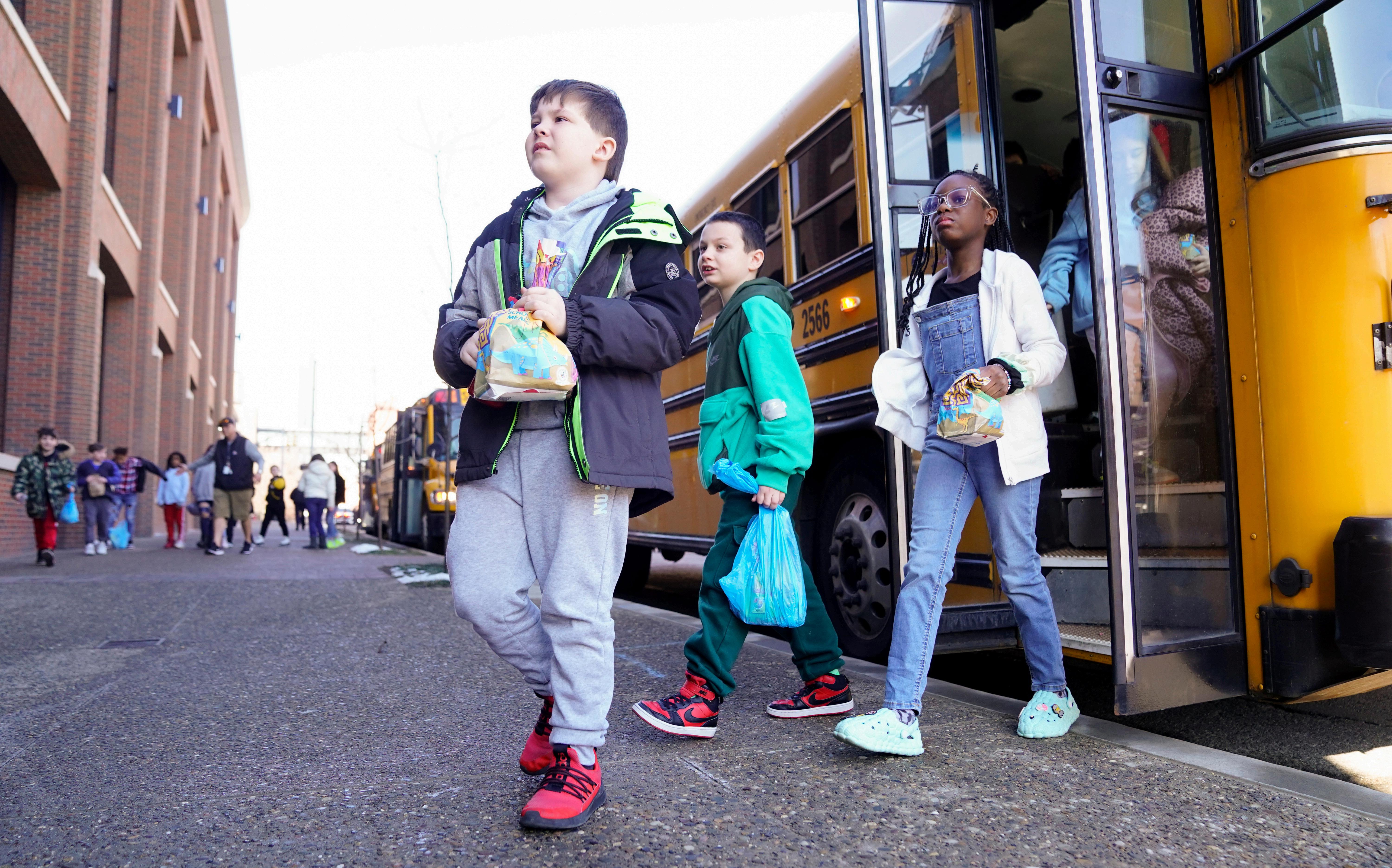

1b. Implement district-wide grade level requirements for minimum program offerings, including extra-curricular opportunities across all schools
Once strategic initiative 1b is successfully completed, the following outcomes will be achieved:
All students will have access to uniform academic (instructional minutes) and extra-curricular opportunities in Pittsburgh Public Schools
Standard framework for scheduling and time allocation that prioritizes literacy, math, STEM, art, music, world language, physical education, social studies and career exploration will allow every student in the district access to a joyful, highquality education
2a. Analyze existing specialized programming and magnets to establish a way to provide equitable offerings district-wide when consolidating schools.
At the completion of strategic initiative 2a, the following outcomes will be achieved:
Goals and parameters of equitable offerings district-wide.
Portfolio of specialized programming offered district-wide (magnets, CTE, early childhood, etc.).
Equitable magnet application process.
Protocols to review and address regional PSE classrooms to allow students to maintain their neighborhood/feeder pattern school.




Over the next five years, PPS will prioritize community outreach and access through two objectives and three initiatives
1. Strengthen aligned partnerships that expand access to community resources
1a. Implement Community Hubs by fostering collaborative partnerships with external stakeholders to provide immediate and accessible services to students and families beyond the traditional school setting. (YEAR 2)
1b. Define expectations for district- and school-level partnerships, including ways organizations can partner with Pittsburgh Public Schools and a clear process for aligning with the District’s work (YEAR 2)
2. Strengthen systems for families to productively engage with their schools and support their students
2a. Establish a Community Ambassador Network of empowered individuals within each school community to serve as liaisons between the District, schools, families, and the broader community (YEAR 2)
is a community deeply committed to the success of its public schools. The city is rich with resources, including a strong foundation community, local nonprofits, cultural institutions and service providers, all of which play a vital role in supporting education. The community not only recognizes this wealth of resources but also actively engages in efforts to enhance the educational landscape
However, yearly declines in enrollment, coupled with population shifts, present significant challenges to providing equitable, excellent, and efficient educational opportunities. These demographic changes strain the District's ability to meet the diverse needs of all students
For example, some schools may face difficulties maintaining diverse program offerings or retaining specialized staff as student populations fluctuate
In recent parent focus groups, approximately 23% of responses highlighted the importance of community support for mental and emotional well-being as a top priority, while 18% emphasized the need for after-school support and enrichment programs
These responses reflect a growing awareness of the critical role holistic support plays in student success. For instance, many parents expressed a desire for expanded access to mental health support within schools and the establishment of wellness centers that provide a safe space for students to address their emotional needs. Additionally, afterschool programs, such as tutoring, arts, and sports, were frequently mentioned as essential for student development beyond the classroom.
Nonprofit community service providers, often described as the backbone of the community, were frequently cited as essential assets by community partners, funders, and union representatives This underscores their importance and the community's reliance on their services. For example, organizations like the YMCA, Big Brothers Big Sisters, and local food banks provide crucial support that helps students and families overcome challenges related to food insecurity, mentorship, and after-school care Additionally, external stakeholders, including Allegheny County Department of Human Services, higher education institutions like the University of Pittsburgh, cultural organizations such as the Pittsburgh Cultural Trust, and advocacy groups like A+ Schools, were identified as valuable resources that contribute significantly to the well-being and development of students
While many partners already do exceptional work for our students, Pittsburgh Public Schools (PPS) recognizes the need to better leverage these community resources to enhance student outcomes and experiences Theme D initiatives aim to strengthen partnerships and align systems to provide families with the resources they need to better support their children.
Additionally, PPS could collaborate more closely with local businesses to create internship and job-shadowing opportunities for high school students, particularly those from historically marginalized communities. These partnerships could help bridge the gap between education and the workforce, providing students with real-world experiences that align with their career interests.
By fostering stronger collaboration with community partners, PPS seeks to create a more supportive and enriching environment for all students, ensuring that every child has the opportunity to thrive both academically and emotionally. These efforts could include regular community forums where parents, teachers, and local organizations come together to share ideas, identify needs, and co-create solutions that address the unique challenges faced by Pittsburgh’s diverse student population
Community schools help build stronger communi engaging parents and families to address barriers to learning. In PPS, 9 community schools are worki meet the unique needs of students and families ac the District.


Parent representatives on the Parent Advisory Council serve as liaisons between parents in their schools and the District, ensuring families in their schools are informed about PPS matters


The District partners with over 100 communitybased nonprofits and youth organizations to support students' academic and social-emotional needs.




A partnership between Pittsburgh Public Schools, the PNC Foundation, and the Western Pennsylvania Conservancy transformed an 18,000-square-foot asphalt parking lot at Pittsburgh Chartiers Early Childhood Center, located in the Windgap and Chartiers neighborhoods, into a safe, green space for children to play and learn
A partnership between the City of Pittsburgh and Pittsburgh Public Schools – Prepare to Prosper provides work-based learning opportunities and paid employment to Career and Technical Education (CTE) students
1HOOD, Duolingo, REACH, One Northside, Urban League of Pittsburgh, Homewood Children's Village, and the Trade Institute of Pittsburgh joined the Take a Father to School Day Committee and PPS to participate in the national Take a Child to School Day
Black Men Read brings over 100 Black men into 35 schools across the District to encourage a love of reading and promote literacy to students while countering negative narratives about Black men
A strong partnership between Special Olympics Pennsylvania and Pittsburgh Public Schools brings Unified Sports to schools across the District, where students with and without disabilities train and compete together as teammates
In December 2022, the Pittsburgh Penguins and Pittsburgh Public Schools announced the launch of PPS All-Stars, a new mentoring program As part of this initiative, the Penguins committed to providing all Pittsburgh Public Schools students and educators in K-5, 6-8, and K-8 schools with free tickets to attend a Penguins hockey game at PPG Paints Arena The partnership also celebrated the success of a hockey pilot program at Pittsburgh Obama and the Pittsburgh Penguins PPS All-Stars Scholarship Program in collaboration with NEED
For 30 years the Pittsburgh Public Schools and 100 Black Men of Western Pennsylvania, Inc have held the African American History Challenge Bowl, The annual competition brings teams of students together from K-8, 6-12, middle, and high schools to challenge their knowledge of Black History based on a middle-level study guide and the resource "100 Amazing Facts About the Negro," written by Henry Louis Gates, Jr., for high school students.
The "Women Who Lead" career exploration day brings over 100 accomplished women into the classroom, providing students in grades 6-8 with a unique opportunity to engage with women leaders from across Pittsburgh during Women’s History Month.


Each initiative within the strategic plan is led by an action team of 5-8 staff members, including 1-2 team leaders, and supported by a cabinet sponsor to ensure effective implementation. Performance measures have been established to track the District’s progress for each outcome The Superintendent of Schools is fully committed to the plan's success and will provide regular updates to keep staff, families, and the public informed.
Students are prepared for success in life:
3rd Grade Reading proficiency based on the state assessment
3rd Grade Math proficiency based on the state assessment
9th Grade Biology proficiency based on the state assessment
Student growth based on state assessment growth metrics
Graduation rates by cohorts and subgroups
Disparities in African American student outcomes are eliminated:
Achievement Gaps on state assessments
Representation in Gifted programming
Gaps in high school graduation rates
Overidentification in Special Education
Advanced Placement (AP) enrollment and test participation
Gaps in percentage of students earning professionally recognized certification prior to high school graduation

Each initiative is led by an action team of 5-8 staff The work of each action team will be monitored regularly to ensure fidelity of implementation
Students experience equitable, high-quality learning environments:
Teacher perceptions as measured by the Teaching and Learning Conditions Survey
Student perceptions as measured by the Panorama Student Survey
Staff attendance
Students are safe and socially, emotionally, and physically healthy:
Suspension rates and disparities
Student perceptions as measured by the Panorama Student Survey
Attendance rates
Students benefit from community resources:
Number of students served by in-school partners
Number of students served by out-of-school time partners
Numbers of out-of-school time partners
Students are engaged in their learning and school community:
Student perceptions as measured by the Panorama Student Survey





Improve quality and relevance of academic experiences
OBJECTIVES & INITIATIVES
1. Expand relatable and culturally relevant instruction and curriculum
1a. Develop curricula for all disciplines, incorporating instructional frameworks, assessments, and unit maps aligned with culturally relevant best practices (YEAR 1)
2. Elevate student-centered options and opportunities
2a. Create a system to elevate student voice and student-centered pathways (YEAR 2)
3 Enhance and integrate preparation for future pathways
3a. Strengthen and expand college and career pathway opportunities through expanded partnerships with local businesses, colleges and universities, and community (YEAR 1)
4 Deepen staff capacity to support successful learning experiences for all students
4a. Design diverse dynamic high-quality learning opportunities aligned with adult learning principles (YEAR 1)
4. Disparities in African American student outcomes are eliminated 1. Students are prepared for success in life
Create safe, engaging and inclusive school environments
OBJECTIVES & INITIATIVES
1. Cultivate school cultures of hope, well-being and belonging
1a. Implement research-based school and classroom practices that create positive student-centered cultures where thinking is valued, visible, and promoted (YEAR 1)
2. Expand programs that promote students interests and self expression
2a. Develop diverse course offerings, learning opportunities and extracurricular activities that align student interests and promote self-expression (YEAR 2)
3. Advance inclusionary practices that prioritize students who have been historically marginalized including African Americans students with disabilities, and English Language Learners
3a. Strengthen educators’ capacity to cultivate inclusive learning environments focused on cultural competencies disability awareness and English Language Learner support (YEAR 2)
4. Ensure student safety and support positive student behavior
4a. Expand resources to increase the use of MTSSBehavior strategies to foster proactive empathetic learning environments (YEAR 1)
4b Expand both internal and external safety protocols to ensure safety for students and staff (YEAR 1)
We are committed to improving student outcomes and experiences through decisions and practices rooted in excellence,equity,andefficiency.
2. Students experience equitable, high-quality learning environments
5. Students are safe and socially, emotionally, and physically healthy
OBJECTIVES & INITIATIVES
1. Redesign schools to ensure access to quality curricular and extra-curricular experiences
1a Transition to a structure of foundational PK-5 schools, developmentally responsive 6-8 middle schools and 9-12 high schools (YEAR 2)
1b. Implement district-wide grade level requirements for minimum program offerings including extra-curricular opportunities across all schools (YEAR 1)
2. Consolidate schools to maximize resources
2a. Analyze existing specialized programming and magnets to establish a way to provide equitable offerings district-wide when consolidating schools (YEAR 1)
2b. Assess district-wide facility and program costs establishing financial protocols for consolidation recommendations that support academic excellence and financial sustainability (YEAR 3)
2c. Develop standardized, student-centered metrics and a rubric to evaluate the building portfolio, identifying schools for continued use or closure during district consolidation (YEAR 3)
3. Improve building conditions infrastructure and learning spaces
3a. Define Educational Specifications for the physical needs of the District’s educational program including learning spaces specialized staff support spaces and support features for buildings (YEAR 2)
3b. Create a sustainable, adaptable multi-year Facilities Master Plan addressing building usage priority improvements, goals, and projected enrollments, supported by the District’s Capital Plan (YEAR 2)
3. Students benefit from community resources
6. Students are engaged in their learning and school community
OBJECTIVES & INITIATIVES
1. Strengthen aligned partnerships that expand access to community resources
1a Implement Community Hubs by fostering collaborative partnerships with external stakeholders to provide immediate and accessible services to students and families beyond the traditional school setting (YEAR 2)
1b. Define expectations for district- and school-level partnerships including ways organizations can partner with Pittsburgh Public Schools and a clear process for aligning with the District’s work (YEAR 2)
2. Strengthen systems for families to productively engage with their schools and support their students
2a. Establish a Community Ambassador Network of empowered individuals within each school community to serve as liaisons between the District
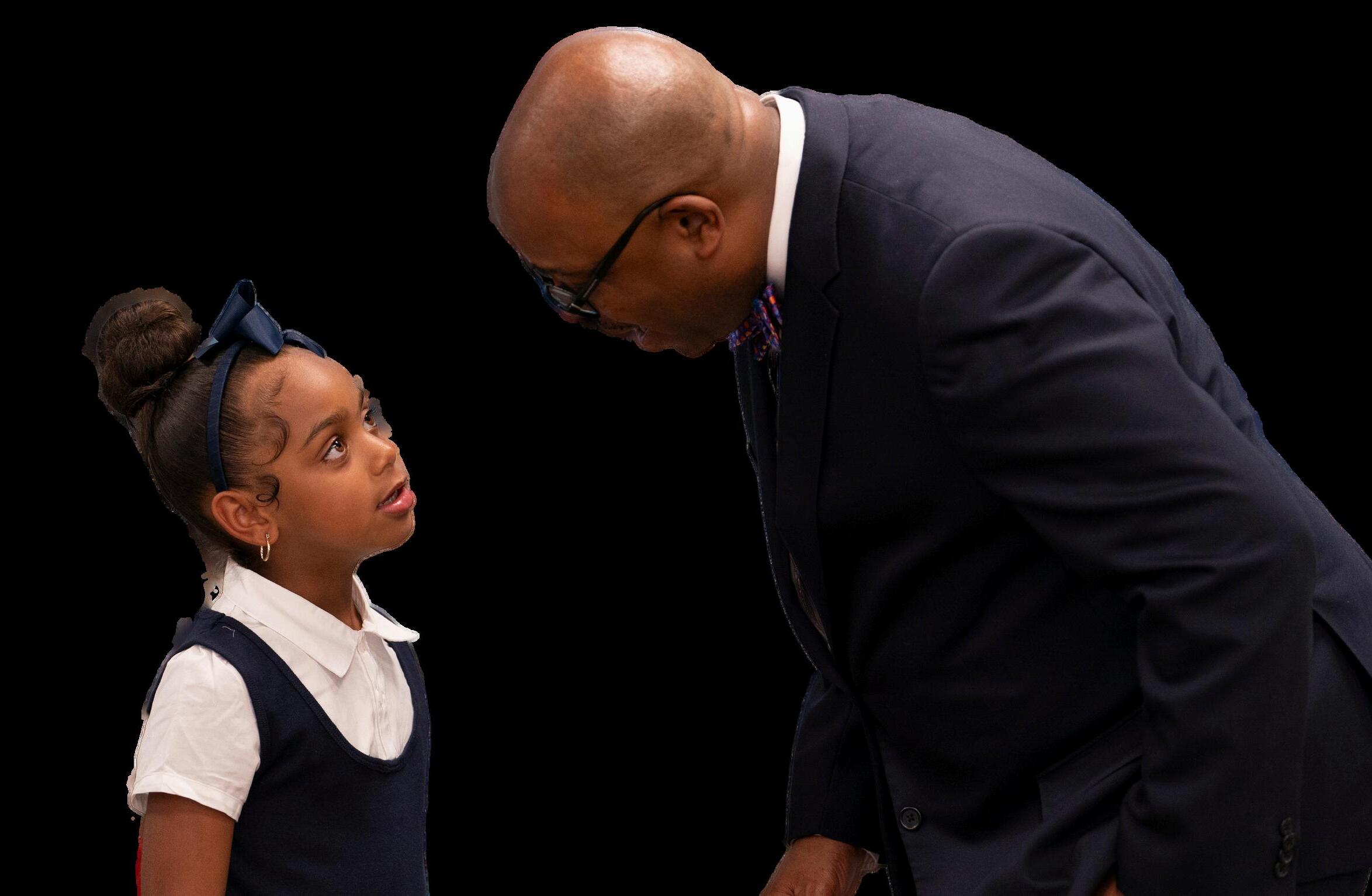
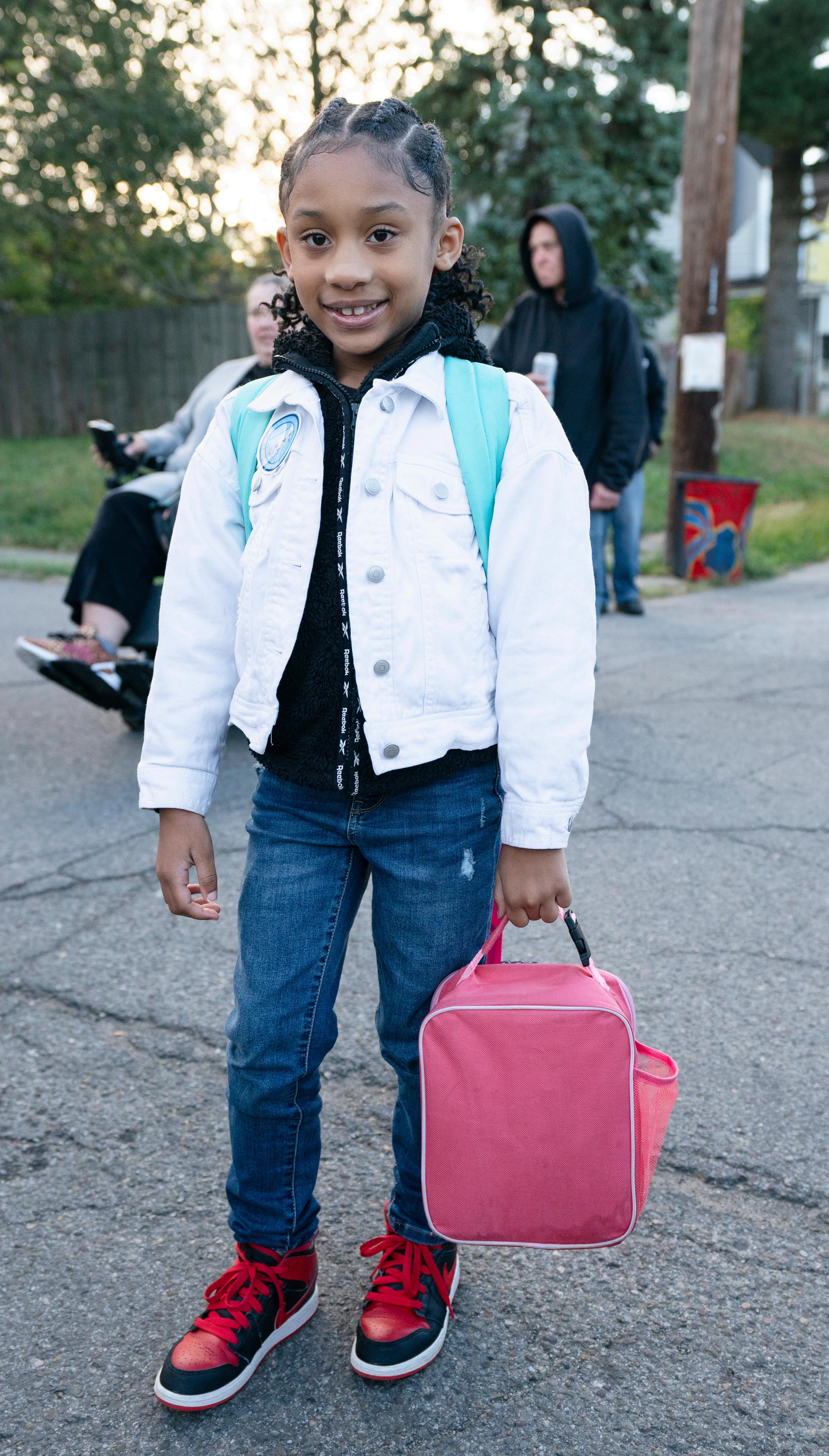
Regarding school culture, it is the beliefs, perceptions, relationships, attitudes, and written and unwritten rules and standards that shape and influence every aspect of how a school and district functions. The term also encompasses more concrete issues such as the physical and emotional safety of students, the orderliness of classrooms and public spaces, or the degree to which a school embraces and celebrates racial, ethnic, linguistic, or cultural diversity. (https://www edglossary org/school-culture/)
Raising the achievement of all students while (1) narrowing the gaps between the lowest and highest performing students and (2) eliminating the racial predictability and disproportionality of which student groups occupy the highest and lowest achievement categories (Pittsburgh Public Schools Board Policy, #102 5; 2018)
Ability to achieve one ’ s desired results by utilizing the resources you have in the best way possible. Something becomes efficient when there is minimal waste, and all processes are optimized. (Superintendent Priority Goals Information Resource - Priority Goal 5)
Providing what is needed to achieve desired outcomes and experiences. Equity is about access and opportunity in giving students what they need. (Singleton & Linton, 2006)
Quality of being outstanding or extremely good (Webster’s) In school districts, excellence is often measured in quantitative outcomes, however; qualitative measures highlighting the experiences of those served (students and families) and providers of service (staff and community) are equally as important (Superintendent Priority Goal 5 Information Resource)


